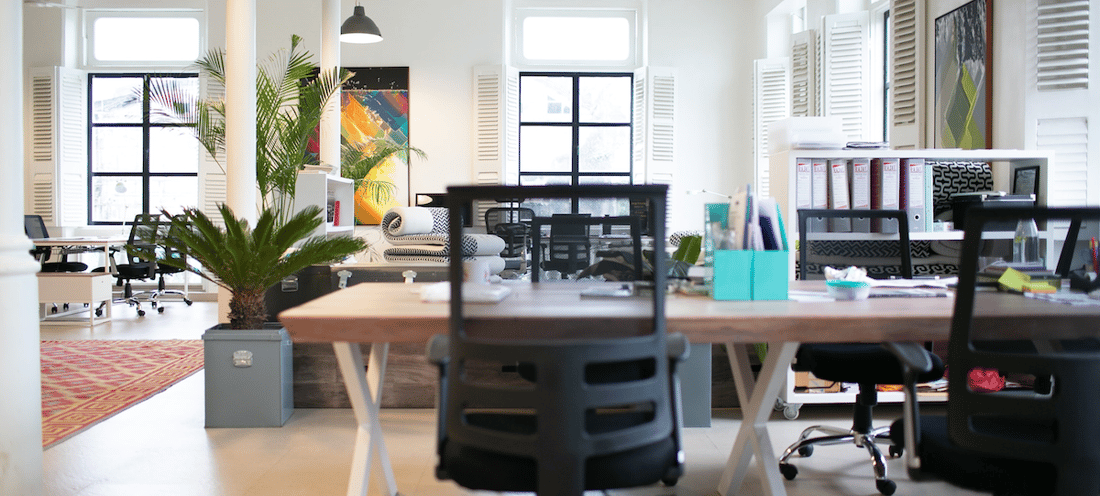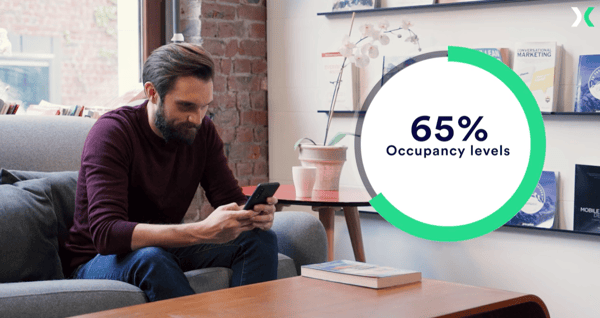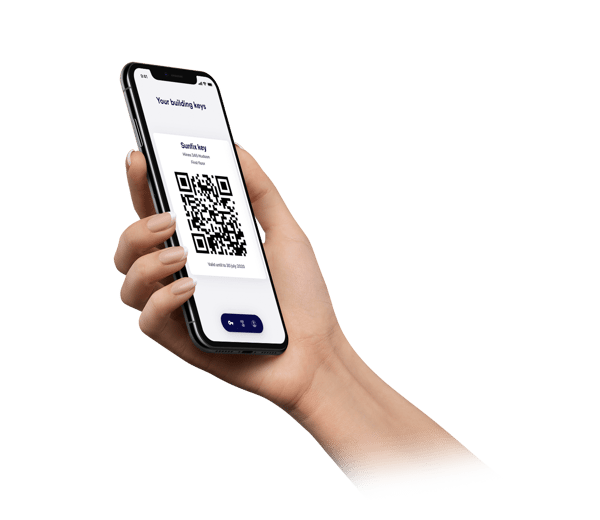7 top workplace transformations to watch in coming months

It goes without saying that in the past 12 months, everything aspect of daily life has been significantly altered - and that’s as true in the workplace as it is in clubs, restaurants, hospitals, and public transportation.
While the pandemic has undeniably resulted in endlessly logistical problems in the workplace (let alone a litany of economic and financial issues), it has also spurred innovative changes to the way we “do” work - and the best of these are likely to remain the status quo even after we’ve resumed some semblance of normal work-life experience.
Top transformations in the world of work
We’ve culled a variety of data - from survey results, statistics about building occupancy, discussions with commercial real estate players, and insights from across all different industries - to zero in on some of the most significant transformations that are occurring in workplaces around the world, across every industry.
Here are some of the most significant ones, both as far as their effect on the way we work, and their likelihood of outlasting the global health crisis to become workplace norms.
1. Health and safety systems facilitate return to normalcy
One of the highest priorities for employers--at least for the foreseeable future--is keeping their people safe: that includes visitors, contractors, vendors, and of course day-to-day employees.
To do this, companies have started relying on integrated solutions that combine advanced registration systems with health and safety checks. Before coming onto company premises, individuals may receive detailed pre-authorization questionnaires asking illness-screening queries.
Assuming the recipient is able to demonstrate a clean bill of health, digital temperature scans at entry are also a common feature of these systems.
And by conveying all of this information in unique “invitations” sent to the recipient’s smartphone, companies can also alert anyone coming to the building in advance about required safety protocols (mask-wearing, social distancing), and facilitate quick contact-tracing in the off chance that such action is needed.
2. Hybrid and agile work environments are trending
One of the defining shifts in workplace mindset has been the idea that, during the global health crisis, “everyone is a visitor.”
This includes day-to-day employees, in large part because working arrangements have shifted so dramatically over the last twelve months. Initially borne out of a desire to facilitate social distancing and cut down on illness transmission, telework has now taken off, with work from home (or at least work offsite) and hybrid situations becoming increasingly more common.
“I think there's been an unconstructive, or sort of polarized, debate that's robbed too much of the headlines in the last nine months: "Is the office dead?" or "home vs. office." It's not that simple. The reality is, home is a part of that spectrum, the office is a part of that spectrum. Then, the offices we know won't just be an HQ and a sprinkling of regional offices, but rather thousands of points. Large and small.” - Mark Gilbreath, CEO, LiquidSpace
Companies are now keen to offer employees tons of flexibility in doing their jobs wherever (and whenever) suits them best, a framework known as “agile work.”
Employees may work exclusively remotely - from home, from a co-working space, or from a hammock in Bali - or they may come into the office on alternating days or sporadically.
 Employers have noticed over the past year that adoption of the agile framework pays off - employees are more productive when given the freedom to complete tasks when and where they choose.
Employers have noticed over the past year that adoption of the agile framework pays off - employees are more productive when given the freedom to complete tasks when and where they choose.
"Transformations, including Agile ones, touch [people's] ways of working, comfort zones, frustrations, ideas. And [to deal] with [leading people and organizations] towards a transformation, you need to be humble, respectful, and know how to put on the table good arguments, not start conflicts." - Raul Barth, Agile Coach, Amadeus
3. Room and desk reservations systems to make sure everyone has a spot
Due to the increasing popularity of hybrid work situations, we’ve also seen advances in the configuration of offices and workspaces in general.
Gone are the days of assigned cubicles and standing around the water cooler discussing last night’s primetime TV show. (Don’t worry - they’re still discussing that show over Slack.)
Now, with employees coming into the offices less consistently, new “flex space” systems have popped up to allow desk reservations, room reservations, and other types of advanced booking.
"The journey of the employee or of the visitor doesn't start in the lobby. It starts a day or two, or a week or two, before that journey to the office." - Simon Cohen, Global Partner Director, Condeco
The advantage to these systems for companies is that space-sharing allows for more efficient use of rooms and resources, saving on electricity and climate control, all while remaining within pandemic-safe occupancy limits.
 And for employees, it’s a great convenience to know exactly which desk you’ll be able to sit at, in which room, and that any video-conferencing software or other technology can be enabled in advance of meetings.
And for employees, it’s a great convenience to know exactly which desk you’ll be able to sit at, in which room, and that any video-conferencing software or other technology can be enabled in advance of meetings.
4. Digital sign-in processes make everything safer and easier
Adopting a digital sign-in process is becoming a mainstay not only of companies looking to keep accurate records of who comes in and out of the building, and when (an important consideration not just during the pandemic, but also for security purposes), but also any business looking to deliver a higher level of professionalism.
 Rather than having entrants stand in line to sign in at a front desk with a paper-and-pen logbook - which can be easily lost, destroyed, or forgotten about entirely (with visitors leaving the premises without signing out) - more and more companies are relying on digital sign-ins on iPad screens, or even touchless scanning, where visitors scan a unique QR code to sign in, log their arrival and departure times, and gain access to the premises only as needed.
Rather than having entrants stand in line to sign in at a front desk with a paper-and-pen logbook - which can be easily lost, destroyed, or forgotten about entirely (with visitors leaving the premises without signing out) - more and more companies are relying on digital sign-ins on iPad screens, or even touchless scanning, where visitors scan a unique QR code to sign in, log their arrival and departure times, and gain access to the premises only as needed.
"We think about the staging and the queuing if you've got elevators. Some buildings have people lined up outside trying to get through the elevators. And what's going to happen in the wintertime, or when it starts to rain or snow? We really do need to think about transforming the lobby." - Kay Sargent, Senior Principal - Director of WorkPlace, HOK
A serious added benefit, besides not forcing visitors and front-desk attendants to stand in close proximity, is the smoothness and efficiency of this sign-in process. No more long lines and confusion in the lobby!
5. Data privacy and security are a priority
Unfortunately, having access to individuals’ private health data has become an important component of safety and health protocols during the pandemic; ensuring the safety of personnel in the workplace has come to rely on requesting and recording the answers to potentially sensitive health questions.
For this reason, it is important for companies to utilize data privacy compliant systems that store the needed data for as long as required, and guarantee a high level of security.
One obvious way these integrated security solutions improve upon the paper and pen logbooks of old: No longer can any person standing at the desk glance at the logbook and see what names are in it, or worse, leaf through and look at handwritten responses to health questions.
“Data protection in Europe is a fundamental right, but that needs to be balanced against public health, protection of health and safety, which is also a fundamental right. People are protected, their life is protected, their health is protected. And so, we have this balance of two fundamental rights. So, you have legislation about data protection, you have legislation about health, how do you combine those?”- Frederik Van Remoortel, Partner, Crowell & Moring LLP
These robust data privacy measures are crucially important during the pandemic, and it’s unlikely that - once adopted - companies would be eager to go back to systems with so many obvious vulnerabilities.
6. People-flow systems: lots of options, minimal integration hurdles
Cloud-based people management systems - which can merge existing network architecture with multiple new software platforms that provide security, visitor management, health check-ins, and space allocations - are becoming more and more popular in workplaces around the world, as they transform their protocols to adapt to the demands of the pandemic.
While remote work remains common, in a survey of hundreds of CRE professionals, over a third expected that most people would be back to the office within 12-18 months, with steadily increasing numbers post-pandemic.
Integrated systems like Proxyclick can facilitate this safe return by allowing visitors and regular employees to book “visits” in advance, limit the number of people on-site at one time, keep out anyone showing signs of illness, grant unique QR “keys” for access, take temperatures, and enable contact tracing - all from the users’ smartphones.

These different systems all integrate with each other and play well with existing security, digital communication (hello, Slack!), and other software that companies are already using. Thus, they provide a broad menu of options with a blessedly simple adoption process.
"We need to think [...], what technologies do we need to help us. Instead of talking to a client about buying a fancy new technology, it can be getting the most out of something they already have or changing a procedure [...] For me, it's about creating a better, more positive, converged market to help the clients." - Michael Lee, UK Sales Consultant Manager, Nedap
7. HR personnel, the gate-keepers to the new world of work
Ahhh, HR professionals - those vitally important players in workplace functioning and culture. HR folks, we see you!
Besides hiring, firing, taking care of benefits, and mediating weird office disputes, HR personnel now have the difficult job of keeping everyone safe in the workplace.
Never before had HR been so at the forefront as we were last year, while driving through the pandemic. We were looking into employee well-being and employee engagement, and keeping the productivity up. I think we've proven that HR is a very vital function and here to stay, for sure. - Marjolein van Eck, CHRO, IBM Benelux
This includes deciding what policies to enact for safe office attendance, facilitating hybrid and full-time work-from-home situations, managing uninterrupted workflow when employees become ill, and presiding over the adoption of new technologies to facilitate a safe return to work.
HR personnel is working overtime to manage and support a flexible, adaptive working environment that is conducive to productivity, all while ensuring that health and wellness remain priorities.
They are truly the unsung heroes of this past year, and the HR role is growing in prominence in the “new world of work.”
"Now, we're seeing companies say, 'Well, we have to be successful as a company obviously, but how do we make our employees as successful as possible as well, and really treat our employees like stakeholders in the process, not just like workers in the process.' That's been a big fundamental shift." - Brian Kropp, Group Vice President and Chief of HR Research, Gartner
Build the roadmap to the future at Proxyclick Connect
With the workplace landscape ever-evolving, it’s important to stay in the loop about the latest shifts, trends, and technologies. To that end, we’re thrilled to invite you to our virtual event, Proxyclick Connect, live-streaming worldwide from June 8-10, 2021.
We’ll bring together professionals across multiple fields including facilities management, security and compliance, IT, human resources, and proptech, with the goal of navigating the “new world of work.”
Session topics include, but are not limited to:
- Is 2021 the demise of the office? The never-ending debate of remote, hybrid, or in-office working
- How to ensure a healthy building
- Data privacy: Under the microscope
- Workplaces with a purpose: the next generation workspace is human
- How HR can bridge the 'future of work' gap
- Leading the business through the pandemic to 2021 and beyond
- Branching out into flex spaces
Connect promises to be an exciting and informative event, and we hope you’ll join us. Learn more and save your spot below.



